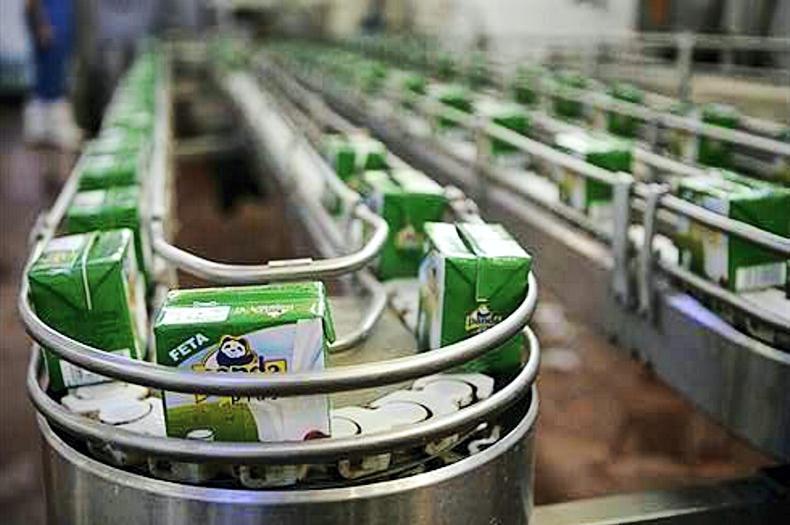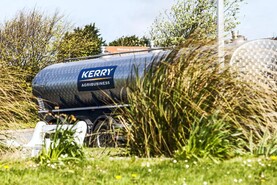Arla, the fourth largest milk processor in the world in terms of milk intake, processed almost 14bn litres in 2016, generating revenues of almost €10bn. Although it is a Danish-headquartered company, following a number of mergers, two-thirds of its milk now comes from outside Denmark, with around 25% coming from the UK.
Arla has always been very Europe-centric, with two-thirds of its business in Europe. Historically, more of its products were sold via trading and other commodity-like channels, similar to many of its competitors. In an effort to get closer to consumers, reduce sales volatility and achieve higher profitability, it has moved significantly more milk into the retail and foodservice channel.
Retail products now represent 80% of its business, of which 44% is branded. It generates approximately 80% of group profits. This makes it more brand-driven relative to its competitors.
This had a negative impact on the milk price it paid, especially in the second half of 2016 as the milk price was rising.
Due to contract negotiations with retail customers, in a rising market, there is a delay in achieving price increases at retail. The company says this was most notably seen in Germany, the UK, Sweden and Denmark, where notice periods to retail customers vary.
In addition to a shift to retail and foodservice, the company is committed to increasing its share of branded products. Despite milk volumes declining 2% in 2016, the company was able to move more than 340m litres from trading to this significantly more profitable channel. In 2016, branded sales volumes grew 5% and, to support this, it increased marketing spend by €26m to €309m in 2016.
It is also strategically focussing on growing its international business, which now accounts for 15% of revenues. It wants 50% of its growth by 2020 to come from international markets. It wants to quadruple revenue from retail and foodservice in China and southeast Asia by 2020 compared with 2015. Last year, it entered into a joint venture with Dairy Farmers of America to build a cheddar cheese plant in the world’s largest cheese market. Profits were negatively affected by losses in its Chinese joint venture, Mengniu. Unfavourable exchange rate developments, mainly as a result of the weakened sterling in the UK, which comprises 25% of group revenue, also negatively affected overall performance.
Another key high-margin segment is its food ingredients business where sales increased in 2016 due to strong value-added protein sales growth.
As a result of the shifts to retail and foodservice, branded and international business, the group was able to reduce sales to the commodity-driven trading channel from 21.5% to 20.1%. It is targeting to reduce this trading business to less than 20% of sales by 2020.
Arla has started to incentivise farmers to use non-genetically modified feed based on commercial opportunities for the business. To actively encourage farmers to do so, it is paying an extra 1c/l. In Sweden, all dairy products are already produced from non-genetically modified feed.
The milk price paid in 2016 was 31c/l. This is how Arla measures its performance versus its peers. It shows that Arla generated an average of 5% more value per kg of member milk than the average of the peer group in 2016. The peer group includes all publicly available competitors in Northern European markets, such as Germany, the Netherlands, the UK, Denmark and Sweden, representing 80% of all milk produced in the region.
As Arla has grown through mergers and acquisitions in central Europe, the UK and Sweden, it has spent the past few years aligning the different companies into one to gain synergies. It is now taking this to the next level, streamlining processes, strengthening categories and brands and becoming more global in its focus. It wants to make its entire supply chain more efficient and is taking a more holistic approach to use of its milk across the company.
Its aim is to reduce costs by €400m over the next four years. Arla has the processing capacity in place to handle more milk than its farmers are currently supplying.
Read more
Milk price fell globally in 2016
Milk Price review – focus on Fonterra
Milk Review – focus on FrieslandCampina
Milk review – focus on Dairy Farmers of America
Milk Price review – focus on Valio
Editorial: plenty of questions around future of dairying
Full coverage: 2016 milk price review
Arla, the fourth largest milk processor in the world in terms of milk intake, processed almost 14bn litres in 2016, generating revenues of almost €10bn. Although it is a Danish-headquartered company, following a number of mergers, two-thirds of its milk now comes from outside Denmark, with around 25% coming from the UK.
Arla has always been very Europe-centric, with two-thirds of its business in Europe. Historically, more of its products were sold via trading and other commodity-like channels, similar to many of its competitors. In an effort to get closer to consumers, reduce sales volatility and achieve higher profitability, it has moved significantly more milk into the retail and foodservice channel.
Retail products now represent 80% of its business, of which 44% is branded. It generates approximately 80% of group profits. This makes it more brand-driven relative to its competitors.
This had a negative impact on the milk price it paid, especially in the second half of 2016 as the milk price was rising.
Due to contract negotiations with retail customers, in a rising market, there is a delay in achieving price increases at retail. The company says this was most notably seen in Germany, the UK, Sweden and Denmark, where notice periods to retail customers vary.
In addition to a shift to retail and foodservice, the company is committed to increasing its share of branded products. Despite milk volumes declining 2% in 2016, the company was able to move more than 340m litres from trading to this significantly more profitable channel. In 2016, branded sales volumes grew 5% and, to support this, it increased marketing spend by €26m to €309m in 2016.
It is also strategically focussing on growing its international business, which now accounts for 15% of revenues. It wants 50% of its growth by 2020 to come from international markets. It wants to quadruple revenue from retail and foodservice in China and southeast Asia by 2020 compared with 2015. Last year, it entered into a joint venture with Dairy Farmers of America to build a cheddar cheese plant in the world’s largest cheese market. Profits were negatively affected by losses in its Chinese joint venture, Mengniu. Unfavourable exchange rate developments, mainly as a result of the weakened sterling in the UK, which comprises 25% of group revenue, also negatively affected overall performance.
Another key high-margin segment is its food ingredients business where sales increased in 2016 due to strong value-added protein sales growth.
As a result of the shifts to retail and foodservice, branded and international business, the group was able to reduce sales to the commodity-driven trading channel from 21.5% to 20.1%. It is targeting to reduce this trading business to less than 20% of sales by 2020.
Arla has started to incentivise farmers to use non-genetically modified feed based on commercial opportunities for the business. To actively encourage farmers to do so, it is paying an extra 1c/l. In Sweden, all dairy products are already produced from non-genetically modified feed.
The milk price paid in 2016 was 31c/l. This is how Arla measures its performance versus its peers. It shows that Arla generated an average of 5% more value per kg of member milk than the average of the peer group in 2016. The peer group includes all publicly available competitors in Northern European markets, such as Germany, the Netherlands, the UK, Denmark and Sweden, representing 80% of all milk produced in the region.
As Arla has grown through mergers and acquisitions in central Europe, the UK and Sweden, it has spent the past few years aligning the different companies into one to gain synergies. It is now taking this to the next level, streamlining processes, strengthening categories and brands and becoming more global in its focus. It wants to make its entire supply chain more efficient and is taking a more holistic approach to use of its milk across the company.
Its aim is to reduce costs by €400m over the next four years. Arla has the processing capacity in place to handle more milk than its farmers are currently supplying.
Read more
Milk price fell globally in 2016
Milk Price review – focus on Fonterra
Milk Review – focus on FrieslandCampina
Milk review – focus on Dairy Farmers of America
Milk Price review – focus on Valio
Editorial: plenty of questions around future of dairying
Full coverage: 2016 milk price review






 This is a subscriber-only article
This is a subscriber-only article









SHARING OPTIONS: